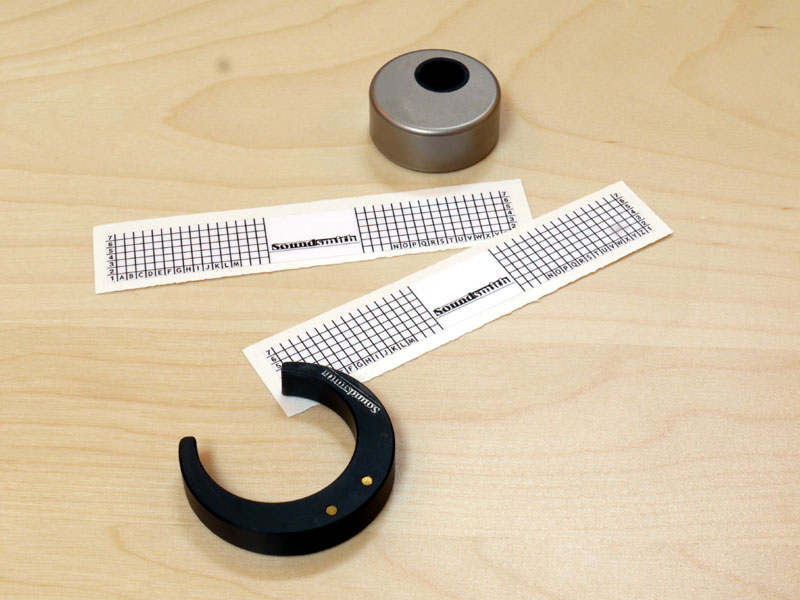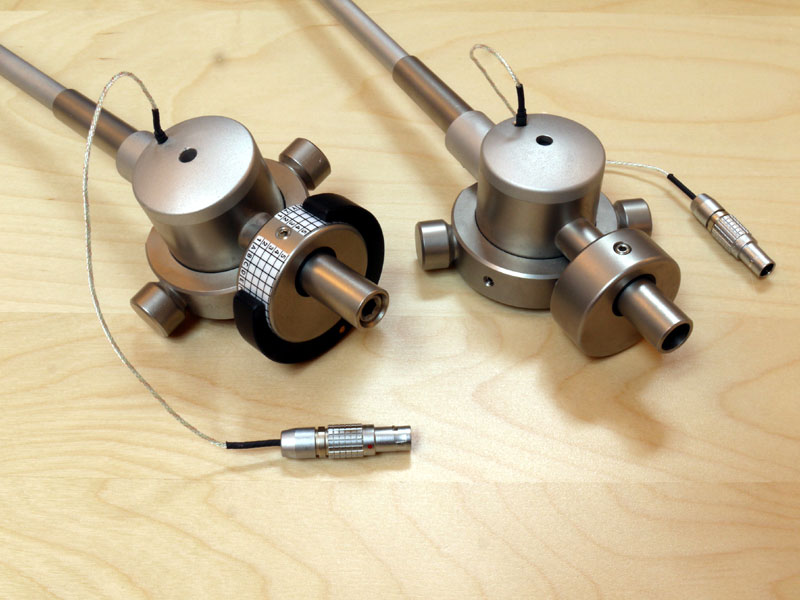Soundsmith Counter Intuitive VPI JWM Modification
ver had one of those things? You know -- one of those things where you’ve been doing some routine but tedious task for years, constantly promising yourself that before you have to do this again, you’ll go out and get the proper tools? But, of course, enough time passes between doing it this time and doing it the next that your good intentions and frustration dissipate and you are back to cussing and berating yourself, making more of those promises you just aren’t going to keep. It’s not exactly news that having the right tools is essential to doing the best job: a screwdriver that actually fits, an Allen key that’s not just the right size but made of something harder than butter, a socket set or D-spanner as required. All of these things make jobs easy -- their absence can make them next to impossible, fraying your nerves as surely as rounding out edges or otherwise damaging the parts you are working on. But not all tools have handles, and sometimes the best tool doesn’t look much like a tool at all. Setting up a phono cartridge is an exercise in the systematic making of tiny, repeatable adjustments -- going just past the point of perfection and then being able to backtrack and find that sweet spot again. Some 'arms make this easier than others -- in some cases by simply eliminating the adjustment in question -- but in all cases the situation is complicated by the fact that the critical cartridge-alignment parameters are all interrelated. Alter overhang and you’ll alter tracking force -- and quite possibly offset too. Depending on the type and construction of your tonearm, VTA, azimuth and overhang can also be intimately connected. Although the error induced in one by the adjustment of another might be tiny, it’s just such tiny adjustments that make the difference between getting everything out of your records and leaving way too much of it behind in the grooves. Which brings me back to that question of tediously repetitive tasks. I’ve been using VPI JMW tonearms (in all their various guises) for well over a decade now, a fact that speaks volumes for the respect I have for their unique combination of performance and facilities. But that doesn’t mean they’re perfect, and there’s one thing about them that drives me up the wall. Being unipivots, they rely on an underslung counterweight that keeps the center of gravity low. This slides on a smooth aluminum tube and is fixed in place with an Allen grub screw. Also, being unipivots, they have offset weights arranged around the base of the bearing housing, in order to stop the 'arm from settling sideways, allowing the user to adjust for correct azimuth, simply by twisting the collar. On paper it’s a supremely straightforward solution; however, in practice it leaves a lot to be desired -- partly because the action is extremely stiff (necessary to prevent unwanted resonance in the bearing housing) and partly because it suffers a complete absence of any kind of graduation, making fine, repeatable adjustments something of a nightmare -- so much so that many users have abandoned the practice and simply rely on using the eccentricity in the counterweight to apply the necessary counterbalancing force. The problem is that in doing so the counterweight comes to combine the functions of VTF and azimuth. Given that the counterweight shaft is also totally ungraduated and that the weight itself moves with complete freedom, making the necessary fine adjustments in VTF to really get a cartridge singing is almost impossible -- especially without inadvertently adjusting the azimuth at the same time. That’s why there’s a large Allen screw sunk into the end of the counterweight shaft, allowing really small increments to be achieved, but many users are either unaware of that fact or, like the azimuth collar, choose not to use it. In part I’m guessing that’s because adjusting either parameter requires lifting the armtube free of the bearing and it just feels so darned awkward, but for whatever reason, Harry Weisfeld’s carefully implemented solutions for cartridge alignment tend to get passed over in favor of a hit-and-miss, "close enough is good enough" attitude. Only it isn’t -- which is why I soldier on, using the awkward but effective adjustments built into the 'arm.
Until now, that is. At RMAF this year I finally got around to picking up the Soundsmith Counter Intuitive (CI), a simple device that allows you to adjust VTF and azimuth easily, repeatably and independently on all JMW tonearms that employ the now-standard 36mm-diameter (1 7/16") underslung counterweight. Very early 'arms had counterweights in a variety of different diameters depending on weight, but these days they are all the same diameter, including those on the new 3D arm-tops, and differ only in thickness. The Soundsmith modification consists of two pieces: a shiny, self-adhesive plastic scale and an eccentric Delrin arc (think of a crescent moon) with a pair of brass rods through its thickest section to add a little extra mass. Fitting consists of sticking the plastic scale around the circumference of the VPI weight and then sliding the eccentric "horseshoe" over it, with the fatter, weighted section at the bottom, effectively creating a composite counterweight, allowing you to lock the VPI weight firmly in place and then make fine adjustments using the separate "horseshoe." But the real brilliance of the design lies in the slick surface of the plastic scale. Not only does this allow you to move the "horseshoe," smoothly and with extreme precision, forwards or backwards to adjust VTF, laterally to adjust azimuth, the grid of the scale allows you to keep track of exactly what you’ve done, so that being systematic and also returning to an earlier setting are both child’s play. You can even use the wipe-clean surface to annotate preferred settings or waypoints in the process. Once you’ve achieved your perfect setting, you can lock the CI in place by noting its position and then removing it, reinstalling it with a 1/2" sliver of the scale’s backing paper between the scale and the widest section of the "horseshoe."
Having been using the Counter Intuitive since RMAF, I’ve been yo-yoing between eureka moments and repeatedly kicking myself for not investing in the SoundSmith mod as soon as it became available; all that pain and frustration I could have avoided -- and all for the princely sum of $49.95! Given the price, the practicality and the sublime ease with which it does exactly what it claims, what’s not to like? It even increases the mass of the counterweight assembly slightly, moving it closer to the bearing pivot to improve tracking. But best of all, by eliminating both the guesswork and the frustration from at least two central aspects of the tonearm’s alignment procedure, it makes your life considerably easier, in turn actually delivering better results and more music. This isn’t just about making your life easier, it is in a very real sense all about getting more performance from your record player and the records you play. Even the name is clever -- although I guess the Audio Pedants Society might suggest that it is misleading on the basis that this is possibly one of the most intuitive products you’ll ever use: one of those, "Why didn’t I think of that?" things that seems right as soon as you install it and just gets better the more time you spend with it. Rather like another leftfield analog accessory, the Feickert Platter Speed app, once you’ve used the Counter Intuitive on a VPI JMW, I can’t ever see you using anything else. It leaves the original parts completely untouched, so is totally reversible should you decide you don’t get on with it, but in this house it has quickly gained essential status. Each CI comes with two self-adhesive scales, so that one horseshoe weight can be swapped between two different tonearm tops (each with their fixed counterweights and scales suitably marked up) if so desired. But given the relative cost of the JMW and the Counter Intuitive, I’d just bite the bullet and buy one for each arm-top, ensuring that your setups stay absolutely spot on. Simple, elegant effective and affordable, the Counter
Intuitive should be at the top of every VPI owner’s Christmas list. Now there’s
a thought. |


